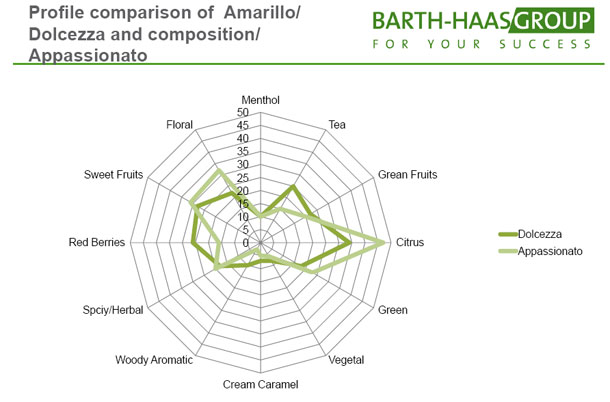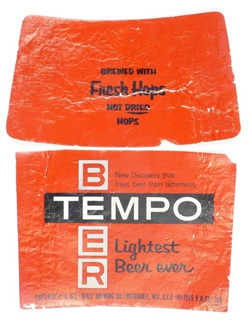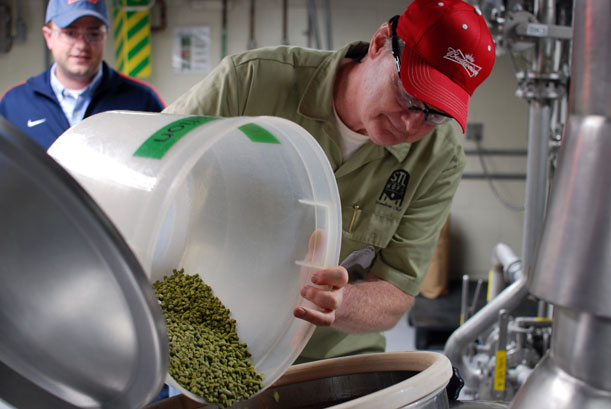Here’s another new hop to look for: Relax. It’s unusual because it contains 0.25% alpha acids, as in almost none. For sake of comparison, Czech Saaz hops have 3-6%, Cascade 4.5-7%, and German Herkules 12-17%. It was bred in Germany and those who have rubbed and sniffed the cones describe aromas like “green tea, celery, hay, and lemongrass.”
Until recently it belonged to a large tea company, but the company is not particularly happy with the variety and its future is uncertain (it is grown on only about five acres). The Barth-Hass Group recently included it in tasting during Brau Beviale, the massive brewing trade fair last November in Nuremberg, Germany. Here are the basics: the tasting featured six beers, one a control, made at the Reserach Brewery in Saint Johann. They were German lagers made with 100% pilsner malt and bittered with Herkules. A single variety (or blend) was added in the whirlpool and used for dry hopping. The bitterness varied in the final beers.
The favorite was a beer called Appassionato and made with a Barth-Haas blend and the second favorite one called Dolcezzo (meaning “sweetness”) and hopped with Amarillo. They are pictured in the top spider graph. The second graph is for Tranquillo, made with Relax.


The beer brewed and dry hopped with Relax (Tranquillo) ranked No. 4. But in the conclusion, Barth-Haas notes, “This beer showed a very different flavour profile compared to the others. The relatively high standard deviation shows that it polarised the tasters and was either ranked rather good (1 to 3) or rather bad (4 to 6). Male tasters preferred the Relax beer more than female tasters.”
When the Society for Hop Research in Germany made four new varieties available to farmers less than four years ago a similar tasting characterized Hallertau Blanc much the same — as polarizing. That may be one reason the farmers were hesitant to plant it. Now demand among US brewers exceeds supply.1
Gone are the days when a new hop variety need to appeal to the largest possible audience, because, well, you know the rest.
*****
1 Obviously, these are still very new varieties. In 2014, 150 of the 1,192 German hop growers cultivated at least one of the three “flavor hops” released in 2012. Another 50 likely will this year. They harvested 100 metric tons (a metric tons is about 2,200 pounds) of Mandaria Bavaria, compared to 19 in 2013, 50 tons of Hüll Melon (7 in 2013), 40 of Hallertau Blanc (5), and 100 of Polaris (29). They expect Mandarina acreage will double in 2015 and that Hüll Melon and Hallertau Blanc will increase by about 60 percent.
 I’d like to know more about the process, and if I did I would share it with you. It feels like there are implications beyond if Hop Hunter IPA is a “best of class” beer. I will be in full research mode late this month at the
I’d like to know more about the process, and if I did I would share it with you. It feels like there are implications beyond if Hop Hunter IPA is a “best of class” beer. I will be in full research mode late this month at the 
 The topic for The Session #94 today is:
The topic for The Session #94 today is: 